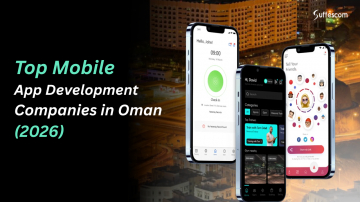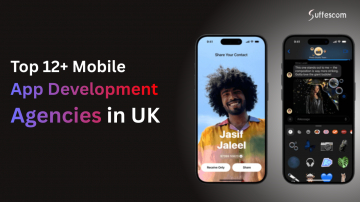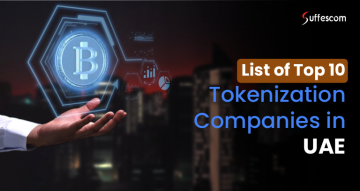Uber Business Model - How Uber Makes Money?
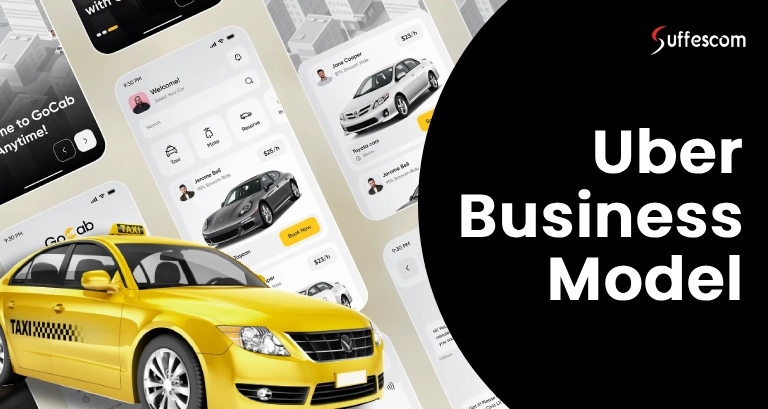
Uber has become a household name worldwide, representing not only convenience in transportation but also a transformation in how businesses can leverage technology to scale rapidly. Founded in 2009, Uber started as a luxury car-hailing service in San Francisco and has since evolved into a global mobility platform, serving millions of riders and drivers across continents. Uber’s growth trajectory is a fascinating case study of how innovation, technology, and disruptive thinking can change traditional industries. This success has also inspired entrepreneurs to build their own Uber clone solutions, replicating the proven model to tap into the growing ride-hailing market.
In this guide, we will examine the Uber business model in depth, focusing on how it generates revenue, the different services it offers, the dynamics of its ecosystem, and the strategies that keep it profitable despite challenges. By the end, you’ll understand not only how Uber makes money but also how its approach reshaped the transportation and mobility industry.
Understanding the Uber Business Model
Uber operates on a platform-based business model that connects two sets of users: riders and drivers. Instead of owning vehicles or employing drivers directly, Uber acts as an intermediary that facilitates transactions between the two parties. The core idea of the Uber business model revolves around providing a digital marketplace where supply (drivers with vehicles) meets demand (riders needing transportation).
This approach minimizes asset ownership, reduces overhead costs, and allows for rapid scalability. Uber extends its business model beyond ride-hailing into food delivery, freight, and other verticals, all while maintaining the same core marketplace principles.
Key Elements of Uber’s Business Model
Two-Sided Marketplace
Uber connects riders who need transportation with drivers who provide it. Riders pay a fare, from which Uber takes a commission.
Scalability through Technology
Uber’s mobile applications and algorithms enable real-time matching, route optimization, and dynamic pricing, ensuring efficiency for both parties.
Global Reach with Local Adaptation
Uber customizes its services according to local regulations, consumer preferences, and cultural practices, making it adaptable in diverse markets.
Service Diversification
Beyond ride-hailing, Uber has expanded into Uber Eats, Uber Freight, Uber for Business, and other initiatives to broaden its revenue streams.
The Key Role of Uber Services in Revenue Growth
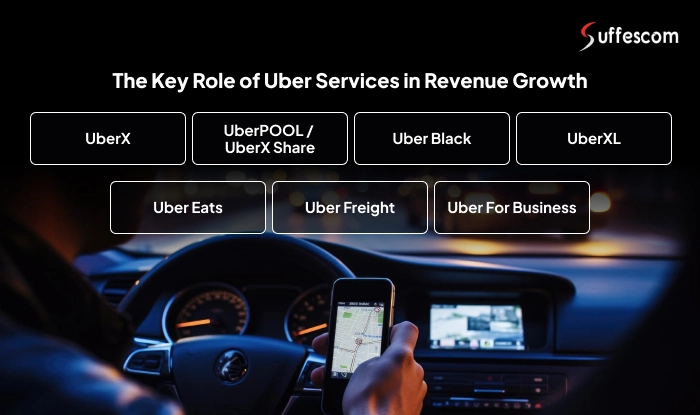
Uber started with a simple idea: booking a black car through an app. Over time, it recognized opportunities to expand into other sectors. Its diversified services play a key role in revenue generation.
UberX
UberX is the company’s flagship service, providing affordable rides in standard vehicles. It caters to everyday commuters, offering convenience, accessibility, and reliable transportation for mass-market consumers worldwide.
UberPOOL / UberX Share
UberPOOL allows multiple riders traveling in the same direction to share a ride, reducing costs for passengers while increasing driver efficiency, vehicle utilization, and overall platform sustainability.
Uber Black
Uber Black is the original premium service, offering luxury vehicles and professional drivers. It targets business travelers and high-income users seeking comfort, style, and exclusive ride experiences.
UberXL
UberXL serves larger groups by providing SUVs or minivans, accommodating more passengers comfortably, making it ideal for families, group travel, or airport transfers with sufficient space and convenience.
Uber Eats
Uber Eats, launched in 2014, is a food delivery platform leveraging Uber’s logistics expertise. It connects restaurants with customers, providing convenient delivery services and generating significant revenue globally.
Uber Freight
Uber Freight is a digital platform connecting shippers with trucking companies and drivers, simplifying freight logistics and enhancing efficiency. It provides real-time tracking, pricing transparency, and optimized load management.
Uber for Business
Uber for Business is an enterprise solution that allows companies to manage employee transportation and meal programs efficiently. It offers analytics, centralized billing, and streamlined operational control.
Get Readymade Solutions to Grab Market Opportunities
Build a strong user base and boost ROI of your ridehailing business with our experts.
How Uber Makes Money – Revenue Streams Explained?
Uber’s revenue generation strategy revolves around multiple streams, each complementing the others. The company primarily earns its revenue through commissions, service fees, and partnerships.
1. Ride-Hailing Revenue
The ride-hailing segment remains Uber’s backbone. Here’s how it works:
- Fare Structure: Riders pay a fare based on distance, time, and dynamic pricing (surge pricing during high demand).
- Commission: Uber takes a percentage cut (usually between 20% to 30%) from each ride. The rest is paid to the driver.
- Booking Fee: In addition to commissions, Uber often charges riders a flat booking fee to cover operational costs.
Dynamic pricing has been a key factor in boosting Uber’s revenue. When demand surges during peak hours, Uber increases fares, which directly increases its share of income.
2. Uber Eats Revenue
Uber Eats generates revenue by charging:
- Delivery Fee: Paid by customers for each order.
- Service Fee: A percentage of the order amount added to the bill.
- Restaurant Commission: Uber charges partner restaurants a commission ranging from 15% to 30% on each order.
- Promotions and Advertising: Restaurants can pay Uber to feature their listings more prominently on the app.
Food delivery has become a crucial growth area for Uber, especially during the COVID-19 pandemic when ride-hailing demand dropped but food delivery surged.
3. Uber Freight Revenue
Uber Freight matches carriers with shippers and charges a fee for each transaction. It operates much like the ride-hailing business but in the trucking industry. Uber earns through:
- Freight Matching Fee: A percentage is received as a fee from each booking of shipment.
- Value-Added Services: Features like load tracking, payment processing, and digital paperwork further enhance Uber’s revenue.
4. Uber for Business Revenue
This enterprise platform generates revenue by:
- Charging businesses for employee ride programs and meal plans.
- Offering additional analytics and management features for organizations.
By targeting the corporate sector, Uber diversifies its revenue beyond individual consumers.
5. Advertising Revenue
Uber has started leveraging its massive user base for advertising. Ads appear within the Uber and Uber Eats apps, allowing businesses to promote products or restaurants. This advertising model provides a growing revenue stream similar to how social media platforms monetize their user base.
6. Miscellaneous Revenue Sources
- Micromobility (scooters and bikes): Rentals generate income, though this segment faces tough competition.
- Partnerships with Public Transit: Some cities collaborate with Uber to provide last-mile connectivity, creating opportunities for shared revenue.
- Autonomous Vehicle Development: While still experimental, Uber invests in self-driving technology to reduce driver costs and potentially boost margins.
What is the Cost Structure of Uber App?
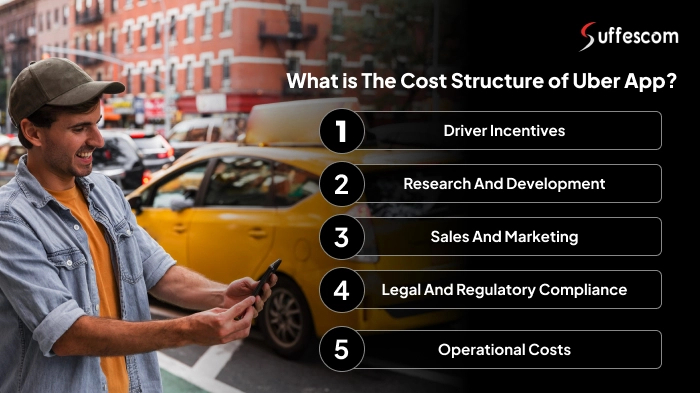
To understand how Uber makes money, it is equally important to see where it spends money. Its major costs include:
Driver Incentives
A large portion of Uber’s expenses goes toward providing bonuses, surge incentives, and referral rewards to attract and retain drivers. This ensures a consistent supply to meet high rider demand.
Research and Development
Uber invests heavily in technology innovation, including AI algorithms, autonomous vehicle research, route optimization, and logistics enhancement. This helps maintain competitiveness and improve efficiency across its ride-hailing and delivery platforms.
Sales and Marketing
Significant spending is done for advertising campaigns, promotional offers, discounts, and brand-building initiatives to attract new riders and drivers. This retains loyalty in a highly competitive mobility market.
Legal and Regulatory Compliance
Global operations require Uber to comply with changing local regulations, lawsuits, and licensing requirements. Substantial financial resources are needed to maintain compliance and avoid legal penalties across different countries and regions.
Operational Costs
Daily operations involve expenses for server maintenance, cloud infrastructure, customer support teams, administrative personnel, and payment processing. This ensures smooth, reliable, and scalable services for riders, drivers, and partner businesses.
Competitive Advantage of Uber App
Uber’s business model succeeds due to several competitive advantages:
Brand Recognition
Uber has achieved worldwide brand recognition, becoming a household name in transportation, which builds customer trust, attracts loyal users, and makes it the first choice in ride-hailing services across multiple regions.
Technology Infrastructure
With advanced algorithms for real-time ride-matching, predictive demand analysis, optimized routing, and secure digital payments, Uber’s strong technology infrastructure creates efficiency, reliability, and seamless experiences for riders and drivers globally.
Network Effect
As more riders join Uber, more drivers are attracted to the platform, increasing vehicle availability, reducing waiting times, improving satisfaction, and strengthening Uber’s competitive position through an accelerating network effect worldwide.
Service Diversification
Uber reduces business risks by diversifying into ride-hailing, food delivery, freight logistics, and corporate travel. This ensures multiple revenue streams that enhance sustainability, increase customer touchpoints, and strengthen long-term financial stability.
Scalability
Thanks to its asset-light business model, Uber can expand rapidly into new markets without owning vehicles. This enables faster scaling, cost-efficient operations, and adaptability in diverse economic, cultural, and regulatory environments.
Challenges in Uber’s Business Model
Despite its global success, Uber faces several challenges:
- Regulatory Issues: Many cities impose strict laws on ride-hailing platforms, affecting Uber’s operations.
- Driver Dissatisfaction: Drivers often protest over low earnings and lack of employment benefits, threatening supply stability.
- Profitability Concerns: Despite huge revenues, Uber has struggled with long-term profitability due to high operational costs.
- Competition: Regional players like Lyft (US), Ola (India), Grab (Southeast Asia), and Bolt (Europe) compete aggressively with Uber.
- Public Perception: Issues around safety, pricing transparency, and worker rights affect Uber’s brand image.
How Uber Ensures Continuous Growth?
Uber continues to innovate to stay profitable in the ride-hailing market:
AI and Data Analytics
Uber utilizes advanced AI and data analytics to predict demand, optimize driver allocation, reduce wait times, and enhance overall customer experience. This ensures efficiency and satisfaction for riders and drivers alike.
Autonomous Vehicles
Uber invests in autonomous vehicle technology to reduce reliance on human drivers. It improves operational efficiency, lowers costs over time, and maintains a competitive edge in the future of transportation.
Partnerships and Acquisitions
Strategic partnerships and acquisitions allow Uber to expand its service offerings, enter new markets, integrate innovative solutions, and strengthen its presence across diverse mobility and logistics sectors globally.
Expanding Mobility-as-a-Service (MaaS)
Uber’s Mobility-as-a-Service approach integrates ride-hailing, bikes, scooters, and public transit, creating a seamless multimodal transportation ecosystem that meets diverse customer needs while increasing platform usage and revenue.
Sustainability Initiatives
Uber invests in electric vehicles, carbon reduction programs, and eco-friendly mobility solutions to align with environmental goals, reduce emissions, and promote sustainable transportation practices globally.
Fuel Your Business Success with Uber Clone
Streamline operations and cut costs with a proven business model like Uber.
Conclusion
Uber has revolutionized transportation by reimagining the taxi industry through a platform-based business model. Instead of owning vehicles, it utilizes technology to connect riders with drivers, creating an efficient two-sided marketplace. Over time, Uber expanded beyond ride-hailing into food delivery, freight logistics, and business solutions, diversifying its revenue streams.
The rise of Uber also inspired businesses worldwide to launch similar solutions through Uber clone apps. These clones have become popular among entrepreneurs exploring ridesharing app development to replicate Uber’s scalable and profitable model in local or niche markets.
Despite challenges like regulatory hurdles, driver dissatisfaction, and growing competition, Uber continues to adapt and grow. Its revenue comes primarily from commissions, delivery fees, freight matching, and advertising, while costs revolve around incentives, marketing, and compliance. Uber’s success lies in its ability to scale rapidly, leverage technology, and continuously evolve to meet global consumer needs.
Suffescom Solutions is a leading taxi app development company that provides Uber clone solutions for entrepreneurs and enterprises aiming to launch their own ride-hailing platforms.
Frequently Asked Questions (FAQs)
1. What is Uber’s primary business model?
Uber adopts the platform-based marketplace model, connecting riders with drivers. It earns revenue through commissions, service fees, and other value-added services.
2. How does Uber make money from each ride?
For each ride, Uber charges riders a fare based on distance, time, and demand. It keeps a commission (20–30%) and may also charge a booking fee, while the remaining amount is paid to the driver.
3. Besides ride-hailing, what other services does Uber offer?
Uber offers services like Uber Eats (food delivery), Uber Freight (logistics for trucking), Uber for Business (enterprise travel and meals), and micromobility (e-bikes and scooters).
4. Is Uber profitable?
Uber has faced profitability challenges due to high costs, incentives, and expansion expenses. While it generates billions in revenue annually, achieving consistent profitability remains a long-term goal.
5. What role does surge pricing play in Uber’s revenue?
Surge pricing increases fares during periods of high demand, allowing Uber to earn higher commissions. Uber app also provides incentives to more drivers to join during peak hours, balancing demand and supply.
6. How does Uber Eats make money?
Uber Eats earns revenue through delivery fees, service fees charged to customers, commissions from restaurants, and advertising payments from restaurants seeking better visibility.
7. What are the main challenges faced by Uber?
Uber’s challenges include regulatory restrictions, competition from local ride-hailing apps, driver dissatisfaction, high operating costs, and safety concerns.
8. Does Uber own cars or employ drivers directly?
No, Uber does not own cars or directly employ drivers. It provides a digital platform where independent drivers use their own vehicles to offer rides.
9. How does Uber benefit businesses through Uber for Business?
Uber for Business allows companies to manage employee travel and meal programs, offering analytics and centralized billing to simplify corporate transportation and food delivery needs.
10. What is Uber’s long-term vision?
Uber’s long-term vision is to become a comprehensive mobility-as-a-service provider, integrating ride-hailing, food delivery, freight, micromobility, and autonomous vehicles into a single global platform.
